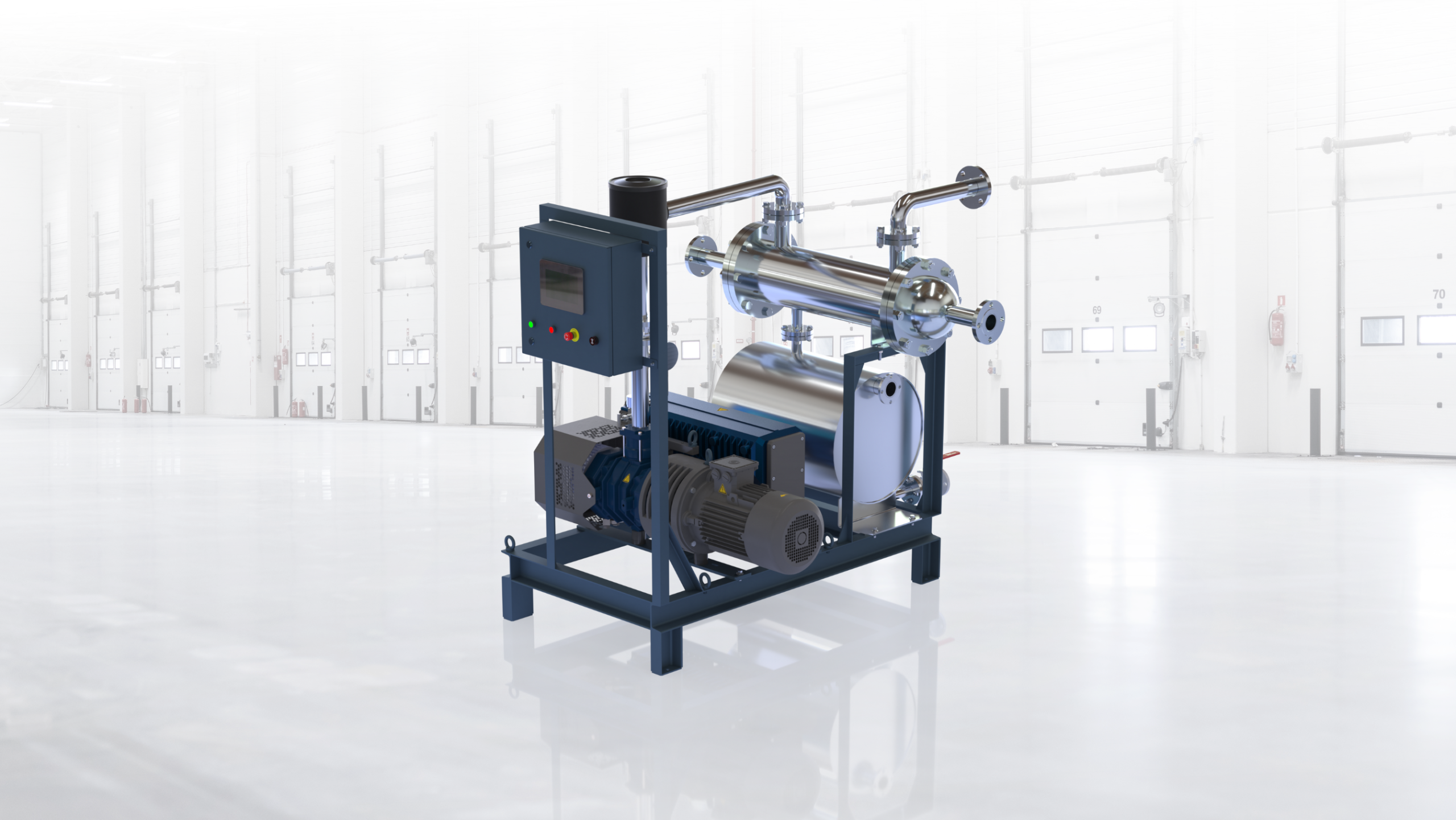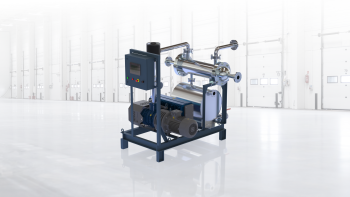Ever thought about what keeps factories humming or lets scientists pull off mind-blowing experiments? Vacuum systems deserve a shoutout. These clever setups whip up spaces with next to no air pressure, perfect for drying things out, slapping coatings on stuff, or keeping pesky air from ruining a lab test. With tons of options floating around, figuring out which system fits the bill might seem tricky. No sweat though, this rundown spills the beans on vacuum types, what they’re good for, and how to snag the right one.
Understanding Vacuum Levels
So, how do folks gauge how much of a vacuum they’ve got? Units like Torr or millibar (mbar) come into play. Picture vacuum levels as a ladder, starting with “barely a vacuum” and climbing to “whoa, almost no air at all.” Here’s the scoop:
- Rough Vacuum: Think of this as the warm-up act, going from regular air pressure (760 Torr or 1013 mbar) down to about 1 Torr (1.3 mbar). Handy for simple jobs like sealing up food packages or tinkering with chemicals.
- Medium Vacuum: Steps it up a notch, dropping from 1 Torr to 0.001 Torr (1.3 mbar to 0.0013 mbar). Great for freeze-drying goodies or boiling liquids without cranking the heat.
- High Vacuum: Things get real here, from 0.001 Torr to 0.0000001 Torr (0.0013 mbar to 0.00000013 mbar). This is the go-to for crafting tiny chips or peering through electron microscopes.
- Ultra-High Vacuum: Super clean and precise, down to 0.0000000001 Torr (0.00000000013 mbar). Think particle accelerators or pretending you’re in outer space.
- Extreme High Vacuum: Below 0.00000000001 Torr (0.000000000013 mbar), it’s the VIP zone for wild physics breakthroughs.
Different pumps handle each rung on this ladder. Check out this quick guide:
| Vacuum Level | Pressure Range | Typical Applications |
| Rough Vacuum | 760 Torr to 1 Torr (1013 mbar to 1.3 mbar) | Vacuum packaging, chemical processing |
| Medium Vacuum | 1 Torr to 10⁻³ Torr (1.3 mbar to 0.0013 mbar) | Freeze-drying, vacuum distillation |
| High Vacuum | 10⁻³ Torr to 10⁻⁷ Torr (0.0013 mbar to 1.3 × 10⁻⁷ mbar) | Semiconductor manufacturing, electron microscopy |
| Ultra-High Vacuum | 10⁻⁷ Torr to 10⁻¹¹ Torr (1.3 × 10⁻⁷ mbar to 1.3 × 10⁻¹¹ mbar) | Particle accelerators, space simulation |
| Extreme High Vacuum | Below 10⁻¹¹ Torr (1.3 × 10⁻¹¹ mbar) | Advanced physics research |
Types of Vacuum Pumps
Vacuum pumps are the unsung heroes behind these systems. They split into three crews:
- Primary (Backing) Pumps: These kick things off, sucking air down to a rough vacuum. Usually, they grab gas and shove it out with some elbow grease.
- Booster Pumps: Call these the turbochargers, speeding up the vacuum game, especially from rough to medium levels.
- Secondary (High Vacuum) Pumps: When it’s time to dig deep into high or ultra-high vacuums, these heavy hitters use slick tricks to nab gas molecules.
Let’s chat about some pumps, how they roll, and where they shine:
1. Oil Sealed Rotary Vane Pump (Primary)
- How it Works: Picture a spinning rotor with vanes trapping gas, squeezing it out with oil keeping everything tight.
- Applications: These champs tackle lab work, chip-making, and food packing like pros.
- Pressure Range: Hits as low as 0.001 mbar.
- Pumping Speed: Anywhere from 0.7 to 275 cubic meters per hour (m³/h).
- Notes: Solid performers, though swapping out oil now and then can be a chore.
2. Liquid Ring Pump (Primary)
- How it Works: Water spins inside, forming a ring that snags and squishes gas.
- Applications: Tough enough for chemical plants or power stations, especially with nasty gases.
- Pressure Range: Reaches down to 30 mbar.
- Pumping Speed: Spans 25 to a whopping 30,000 m³/h.
- Notes: Built like tanks, but water’s part of the deal, so plan accordingly.
3. Diaphragm Pump (Primary)
- How it Works: A bendy diaphragm flaps around, making a vacuum without oil messing things up.
- Applications: Labs, medical gear, and chip factories love these for staying spotless.
- Pressure Range: Can team up with a turbo pump to hit 0.00000005 mbar.
- Pumping Speed: Smaller scale, 0.6 to 10 m³/h.
- Notes: Easy upkeep, and they keep going for over 10,000 hours.
4. Scroll Pump (Primary)
- How it Works: Two spiral scrolls spin, corralling gas to the middle and kicking it out.
- Applications: Chip-making and coating gigs where clean vacuums rule.
- Pressure Range: Down to 0.01 mbar.
- Pumping Speed: 5 to 46 m³/h.
- Notes: No oil in the mix, a win for pristine setups.
5. Roots Pump (Booster)
- How it Works: Two lobed rotors spin opposite ways, trapping gas and passing it along. Needs a primary pump buddy.
- Applications: Speeds up coating jobs or vacuum ovens.
- Pressure Range: Below 0.001 Torr with the right backup.
- Pumping Speed: Up to 100,000 m³/h.
- Notes: Makes the whole vacuum gig zip along faster.
6. Claw Pump (Booster)
- How it Works: Claw-shaped rotors grab and crunch gas. Dry and needs a primary pal.
- Applications: Holds up in rough spots like chemical or drug-making plants.
- Pressure Range: Down to 0.001 mbar.
- Pumping Speed: 100 to 800 m³/h.
- Notes: Pairs well with Roots pumps for extra oomph.
7. Screw Pump (Booster)
- How it Works: Screws twist gas along the pump, handling big loads without oil.
- Applications: Nails vacuum distillation or drying tasks.
- Pressure Range: Around 0.01 Torr.
- Pumping Speed: Up to 750 m³/h.
- Notes: Takes on liquids like a champ, super useful in some setups.
8. Turbomolecular Pump (Secondary)
- How it Works: Crazy-fast blades smack gas molecules toward the exit. Dry and needs a backing pump.
- Applications: Must-haves for electron microscopes or chip processing.
- Pressure Range: Below 0.000000000075 Torr.
- Pumping Speed: 50 to 5,000 liters per second (l/s).
- Notes: Think of these as the speed demons of pumps, but they lean on a solid backup.
9. Vapor Diffusion Pump (Secondary)
- How it Works: Hot fluid turns to vapor, then cools, snagging gas molecules along the way.
- Applications: Old-school fave for research or industrial ultra-high vacuums.
- Pressure Range: Below 0.000000000075 Torr.
- Pumping Speed: 10 to 50,000 l/s.
- Notes: Cheap and trusty, though oil can sneak in and cause trouble.
10. Cryopump (Secondary)
- How it Works: Freezing-cold surfaces lock gas molecules in place.
- Applications: Big in chip-making and space mock-ups.
- Pressure Range: Down to 0.00000000075 Torr.
- Pumping Speed: 1,200 to 4,200 l/s.
- Notes: Needs a refresh now and then to dump trapped gases.
11. Sputter Ion Pump (Secondary)
- How it Works: High voltage zaps gas into ions, burying them in metal.
- Applications: Ultra-high vacuum jobs like welding or vacuum tubes.
- Pressure Range: As low as 0.0000000000075 Torr.
- Pumping Speed: Up to 1,000 l/s.
- Notes: No moving bits, low fuss, but metal parts wear down eventually.
Here’s a table to size them up:
| Pump Type | Category | Wet/Dry | Pressure Range | Pumping Speed | Key Applications |
| Oil Sealed Rotary Vane | Primary | Wet | 1×10⁻³ mbar | 0.7–275 m³/h | Labs, semiconductor, packaging |
| Liquid Ring | Primary | Wet | 30 mbar | 25–30,000 m³/h | Chemical processing, power plants |
| Diaphragm | Primary | Dry | 5×10⁻⁸ mbar (with turbo) | 0.6–10 m³/h | Analytical instruments, medical devices |
| Scroll | Primary | Dry | 1×10⁻² mbar | 5.0–46 m³/h | Semiconductor, vacuum coating |
| Roots | Booster | Dry | <10⁻³ Torr | Up to 100,000 m³/h | Coating systems, vacuum furnaces |
| Claw | Booster | Dry | 1×10⁻³ mbar | 100–800 m³/h | Chemical, pharmaceutical industries |
| Screw | Booster | Dry | ~1×10⁻² Torr | Up to 750 m³/h | Vacuum distillation, food degassing |
| Turbomolecular | Secondary | Dry | <7.5×10⁻¹¹ Torr | 50–5000 l/s | Electron microscopy, semiconductor |
| Vapor Diffusion | Secondary | Wet | <7.5×10⁻¹¹ Torr | 10–50,000 l/s | Research, industrial ultra-high vacuum |
| Cryopump | Secondary | Dry | 7.5×10⁻¹⁰ Torr | 1200–4200 l/s | Semiconductor, space simulation |
| Sputter Ion | Secondary | Dry | 7.5×10⁻¹² Torr | Up to 1000 l/s | Electron beam welding, vacuum tubes |
Applications of Vacuum Systems
Curious where these gizmos pop up in real life? Here’s a peek at some everyday uses:
- Semiconductor Manufacturing:
- What’s Happening: Building chips means laying down thin films or carving tiny patterns.
- Vacuum Level: High to Ultra-High Vacuum.
- Pumps Used: Turbomolecular or Cryopumps.
- Why: Keeps everything squeaky clean so no air or dust wrecks the process.
- Pharmaceuticals:
- What’s Happening: Freeze-drying drugs to keep them fresh.
- Vacuum Level: Rough to Medium Vacuum.
- Pumps Used: Rotary Vane or Scroll Pumps.
- Why: Sucks out water without cooking the medicine.
- Food Processing:
- What’s Happening: Packing or drying food to last longer.
- Vacuum Level: Rough Vacuum.
- Pumps Used: Liquid Ring or Rotary Vane Pumps.
- Why: Zaps oxygen to stop spoilage or dries without ruining flavor.
- Chemical Processing:
- What’s Happening: Distilling or evaporating tricky liquids.
- Vacuum Level: Rough to Medium Vacuum.
- Pumps Used: Diaphragm or Liquid Ring Pumps.
- Why: Lowers boiling points to save heat-sensitive stuff.
- Research and Development:
- What’s Happening: Physics or material experiments.
- Vacuum Level: Anything from Rough to Ultra-High Vacuum.
- Pumps Used: Mix of primary, booster, and secondary pumps.
- Why: Matches whatever the experiment calls for.
- Automotive:
- What’s Happening: Boosting brakes or cutting emissions.
- Vacuum Level: Rough Vacuum.
- Pumps Used: Engine-driven vacuum pumps.
- Why: Makes braking smoother and cleans up exhaust.
- Aerospace:
- What’s Happening: Testing space gear or mimicking orbit.
- Vacuum Level: High to Ultra-High Vacuum.
- Pumps Used: Turbomolecular or Ion Pumps.
- Why: Space has no air, so tests need to match.
- Medical:
- What’s Happening: Drawing blood or running surgical tools.
- Vacuum Level: Rough Vacuum.
- Pumps Used: Small diaphragm pumps or medical systems.
- Why: Keeps things efficient and sterile.
Choosing the Right Vacuum System
Picking a vacuum system isn’t about snagging the first pump off the shelf. A few things need mulling over:
- How Much Vacuum’s Needed?: Pin down the pressure range. Rough for packaging, high for chips, you get the drift.
- What’s Floating Around?: Corrosive gases or heavy vapors? Some pumps shrug that off better.
- Cleanliness: For pristine spots like chip labs, dry pumps (diaphragm or scroll) dodge oil messes.
- Maintenance: Wet pumps (like rotary vane) need oil swaps, while dry ones (like diaphragm) chill with less fuss.
- Cost: Weigh the price tag against how long it’ll last. High-vacuum pumps might sting upfront but deliver big.
- Space and Power: Ensure it fits the room and plugs in right.
Feeling stumped? Pros out there can point to the perfect pick.
Conclusion
Wrapping up, nailing the right vacuum system means knowing what pumps can do, how much vacuum’s needed, and what the job entails. Ponder the pressure, gas types, cleanliness, upkeep, and budget. Sort that out, and the setup will make everything run like a dream. Need a nudge? Experts are ready to lend a hand with the best fit.








